Excavating at the necropolis of Saqqara, Egypt
This fall, four students from Leiden University were given the opportunity to participate in a fieldschool set in the renowned Necropolis of Saqqara in Egypt.
This fieldschool, organized by Dr. Miriam Müller and Dr. Sarah Schrader, consisted of two weeks, in which the students joined the Leiden-Turin Expedition to Saqqara, a joint project between the National Museum of Antiquities in Leiden, the Museo Egizio of Turin and Leiden University. With the help of a generous grant from the Barreveldfonds, these students experienced the last two weeks of this 6-week project.
The Leiden-Turin mission has a concession area in Saqqara where the Egyptian Ministry of Tourism and Antiquities allows them to excavate an area used by the ancient Egyptians between about 3000 BC till the Late Antique Period, which is perhaps best known for the tombs dating to the reign of the pharaohs Tutankhamun, Ay, Horemheb and Ramses I and II (ca. 1334-1212 BCE). These tombs show signs of continued use as burial places, but also display graffiti drawings indicating that people from later periods revisited these tombs, possibly to draw inspiration for their own burial monuments. Excavations during the 2022 season yielded a variety of archaeological finds, keeping these students and the rest of the team on their toes!
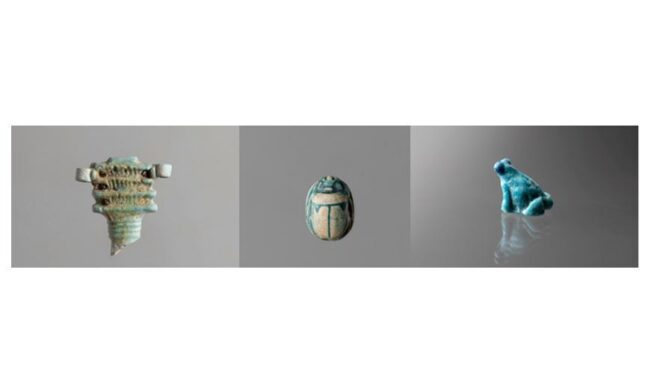

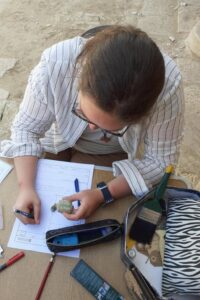
Egyptology students
Under the supervision of Dr. Miriam Müller, two students from the Ancient Near Eastern Studies programme, Sandra Veprauska and Lauren van Kruijssen, got acquainted with the find registration process of special finds, such as amulets, shabtis and limestone reliefs. Shabtis are small human-shaped figurines placed in tombs that were believed to help the deceased in the afterlife. In addition to being very interesting and fun to look at, shabtis can also help with dating the tombs, as the style of shabtis differs per period. Most days they were working in the Tomb of Maya and Merit, where they measured, described, and drew the new finds, according to the find registration form. At the end of the day, they also digitized these forms, as good documentation is very important for future researchers. In addition to being responsible for find documentation, they were also introduced to the subject of other specialists, such as the ceramists, illustrators, photographers, and the magnetometry team.
Osteoarchaeology students
The two students from the Archaeology programme, Aida Tadesse and Mary van den Hoorn, joined Ali Jelene Scheers, the human remains specialist, who has been part of the mission since 2017. This season, they did not work on incoming material, but rather focused on studying osteoarchaeological remains excavated in the 2009 and 2010 seasons, as they had previously not been analysed and will soon be published by the previous field director Maarten Raven. This material was retrieved from the Tomb of Tatia, who was a priest at the temple of Ptah. The remains were commingled, meaning that the skeletal elements were mixed, making the excavation of a single isolated individual not possible. As studying individual burials was not an option, all the bones were analysed as individual pieces separate from each other. All the fragments were first sorted, and every individual bone was thoroughly analysed, and if possible, even measured. The latter can help with estimating stature, and possibly with sex estimation of the deceased, as females are generally shorter and males are generally taller.
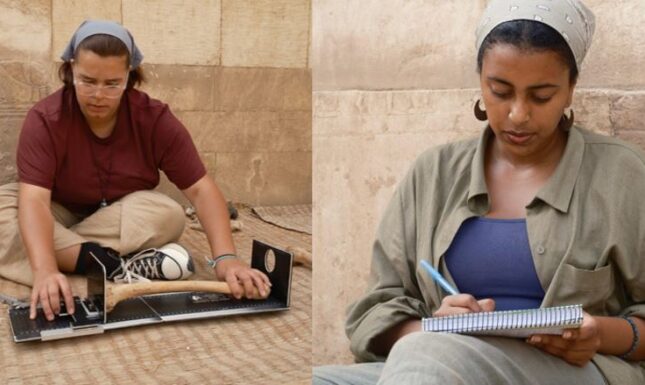
As you can imagine, the students had the time of their lives and learned a lot about the materials they documented. Furthermore, they also got to see the progress that was made by the rest of the team who were working on analysing other materials from this season’s tomb, such as pottery. The group of students and other team members received multiple guided tours from Dr. Nico Staring, who discussed this excavation’s long history and its previous findings. In the picture above, he discusses the tomb of Ptahemwia, focusing on the remaining depictions of the reliefs and ancient graffiti that is visible in some locations. Similarly to this new tomb, many others in this cemetery were previously excavated by people from later periods searching for raw materials to construct their own buildings or monuments. For example, stone blocks from the tomb of Maya and Merit were used in the construction of the nearby Coptic Apa Jeremiah monastery.
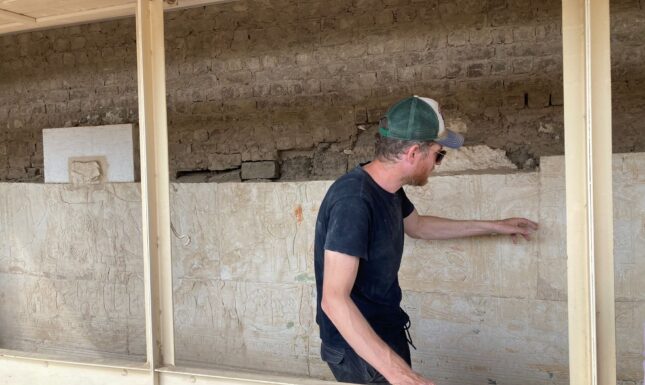
This was an unforgettable experience for these students, one that would be too extensive to sum up in a few paragraphs. If you ever visit Saqqara, they would recommend a visit to the tombs of the Leiden-Turin concession in Saqqara, as they are a sight to behold. In the meantime, if you would like to know more about the Leiden-Turin excavation, read the Digging Diaries, where members of the team discuss their specialties and experiences.
Photos by: Servaas Neijens, Nicola Dell’Aquila and Sandra Veprauska





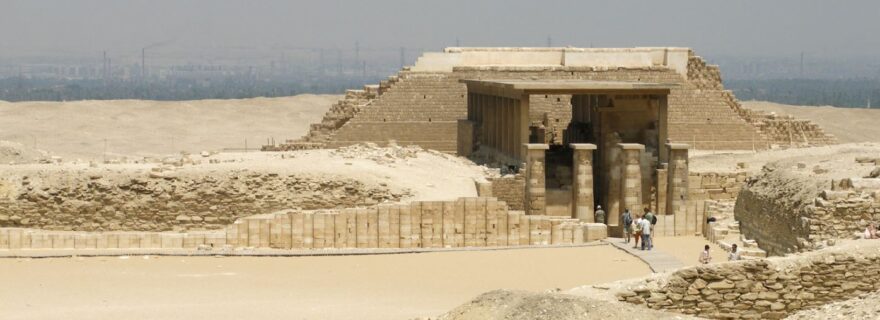
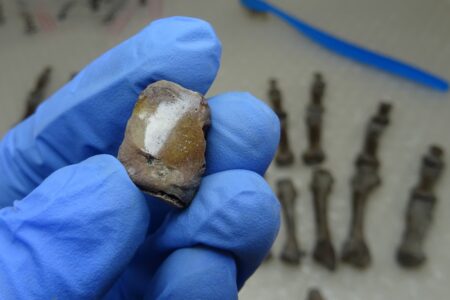
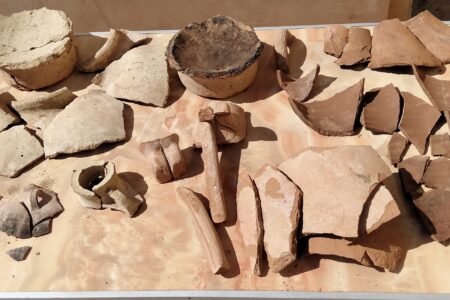
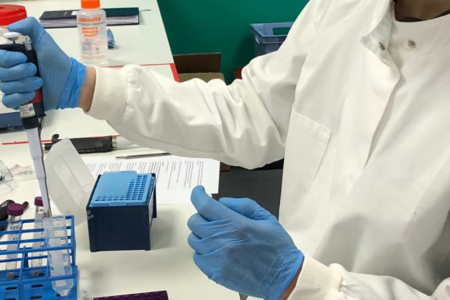
0 Comments
Add a comment